
This PBL project incorporates science and history into one project.
- Subject:
- Applied Science
- History
- Material Type:
- Diagram/Illustration
- Homework/Assignment
- Date Added:
- 10/12/2016

This PBL project incorporates science and history into one project.
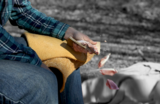
Explore the physics and material science of making stone tools. Educator Nate Salzman walks us through the surprisingly complex science of flintknapping, or the process of turning stone into blades, arrowheads, spear points, axes, jewelry and more. Making tools from stone may be thousands of years old, but required people to think about the properties of the material they were using and the physics of striking the stone to shape it just right.
Consider using this resource to support classroom learning about the relationship between microscopic and macroscopic properties and how forces are transmitted. Animations derived from this video have been published separately as "Animations - The Science of Knapping."
This resource is part of Jefferson Patterson Park and Museum’s open educational resources project to provide history, ecology, archaeology, and conservation resources related to our 560 acre public park. More of our content can be found on YouTube and SketchFab. JPPM is a part of the Maryland Historical Trust under the Maryland Department of Planning.

This course examines the role of science and medicine in the origins and evolution of concepts of race, sex, and gender from the 17th century to the present. We analyze biological, medical, and anthropological studies and how they intersect with historical, social, political, and cultural ideas about racial, sexual, and gender differences. The course follows lecture/discussion format.
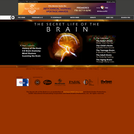
This site presents a history of efforts to understand the brain, a three-dimensional tour of the brain, optical illusions, and an animation showing how magnetic resonance imaging (MRI) works. Video clips examine how the brain evolves and differs from infancy to childhood, adolescence, and through adulthood.

This course is designed to introduce students to fundamental issues and debates in the writing of history. It will feature innovative historical accounts written in recent years. The class will consider such questions as the words historians use, their language, sources, methods, organization, framing, and style. How does the choice of each of these affect the historian's work? How does the author choose, analyze, and present evidence? How effective are different methodologies?

This course is designed to acquaint students with a variety of approaches to the past used by historians writing in the twentieth century. The books we read have all made significant contributions to their respective sub-fields and have been selected to give as wide a coverage in both field and methodology as possible in one semester's worth of reading. We examine how historians conceive of their object of study, how they use primary sources as a basis for their accounts, how they structure the narrative and analytic discussion of their topic, and what are the advantages and drawbacks of their various approaches.

Uranium is crucial for nuclear power generation, supplying 10% of global electricity. The largest recoverable uranium resources are held by Australia, Kazakhstan, Canada, Russia, and Namibia. Major uranium consumers rely on imports due to limited domestic production, leading to significant international trade in uranium products.
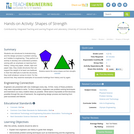
Students are introduced to brainstorming and the design process in problem solving as it relates to engineering. They perform an activity to develop and understand problem solving with an emphasis on learning from history. Using only paper, straws, tape and paper clips, they create structures that can support the weight of at least one textbook. In their first attempts to build the structures, they build whatever comes to mind. For the second trial, they examine examples of successful buildings from history and try again.
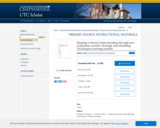
Students will learn about the process of making pre-Columbian ceramics and the history surrounding the collection that this lesson plan is based on. Students will also create their ceramics which will bridge the gap between basic understanding while incorporating a hands-on activity. The purpose of this lesson is to teach the students about a different culture that they would have otherwise not been exposed to at a young age. By examining pre-Columbian ceramics and creating their own ceramics, students will develop skills on how to appreciate and better understand the traditions of cultures besides their own while learning about fields of study that may be of interest to them in the future.
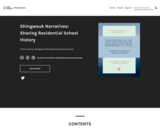
Word Count: 15630
(Note: This resource's metadata has been created automatically by reformatting and/or combining the information that the author initially provided as part of a bulk import process.)

This resource was created by Kelly Schrunk, in collaboration with Dawn DeTurk, Hannah Blomstedt, and Julie Albrecht, as part of ESU2's Integrating the Arts project. This project is a four year initiative focused on integrating arts into the core curriculum through teacher education, practice, and coaching.

Slavery to Liberation: The African American Experience (Second Edition) gives instructors, students, and general readers a comprehensive and up-to-date account of African Americans’ cultural and political history, economic development, artistic expressiveness, and religious and philosophical worldviews in a critical framework. It offers sound interdisciplinary analysis of selected historical and contemporary issues surrounding the origins and manifestations of White supremacy in the United States. By placing race at the center of the work, the book offers significant lessons for understanding the institutional marginalization of Blacks in contemporary America and their historical resistance and perseverance.
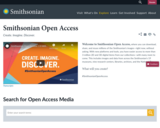
The following overview is from the Smithsonian Open Access web site:
Welcome to Smithsonian Open Access, where you can download, share, and reuse millions of the Smithsonian’s images—right now, without asking. With new platforms and tools, you have easier access to more than 3 million 2D and 3D digital items from our collections—with many more to come. This includes images and data from across the Smithsonian’s 19 museums, nine research centers, libraries, archives, and the National Zoo.
...We have released these images and data into the public domain as Creative Commons Zero (CC0), meaning you can use, transform, and share our open access assets without asking permission from the Smithsonian.

This course surveys canonical and recent theories and methods in science studies. We will organize our discussions around the concept of "reproduction," referring variously to:
Scientific reproduction (how results are replicated in lab, field, disciplinary contexts)
Social reproduction (how social knowledge and relations are regenerated over time)
Biological reproduction (how organic substance is managed in the genetic age)
Electronic reproduction (how information is reassembled in techniques of transcription, simulation, computation).
Examining intersections and disruptions of these genres of reproduction, we seek to map relations among our social, biological, and electronic lives.

This subject presents a survey of social theory from the 17th century to the present. It focuses on the historical contexts out of which theory arises, the utility and limitations of older theories for present conditions, and the creation of new theory out of contemporary circumstances.

This course covers major theorists and theoretical schools since the late 19th century. Marx, Weber, Durkheim, Bourdieu, Levi-Strauss, Geertz, Foucault, Gramsci, and others.

This course is a graduate reading seminar, in which historical and contemporary studies are used to explore the interaction of technology with social and political values. Emphasis is on how technological devices, structures, and systems influence the organization of society and the behavior of its members. Examples are drawn from the technologies of war, transportation, communication, production, and reproduction.

In this lesson, students will be practicing the visible thinking strategy I used to think... Now I think... as well as practicing their HTS. This lesson includes a reflective writing assignment at the end to assess thinking.

In this lesson, students listen to and analyze the song “Broken” by Xiuhtezcatl, then create their own art project to share their feelings about the future of the planet.
Step 1 - Inquire: Students listen to the song “Broken,” do a close reading of the lyrics, and reflect on the meaning of the song.
Step 2 - Investigate: Students watch a video and read a short autobiographical statement to learn more about the artist and activist, Xiuhtezcatl.
Step 3 - Inspire: Students create their own art project to share their emotions about the future of the planet.
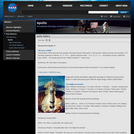
Hear sound recordings from the Apollo 11 mission to the moon.